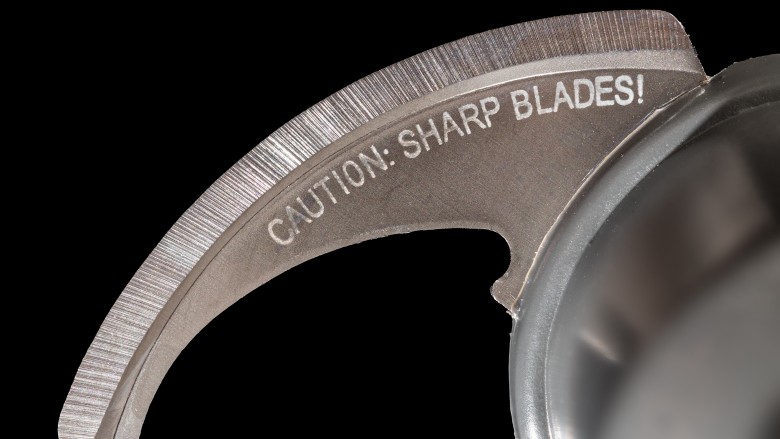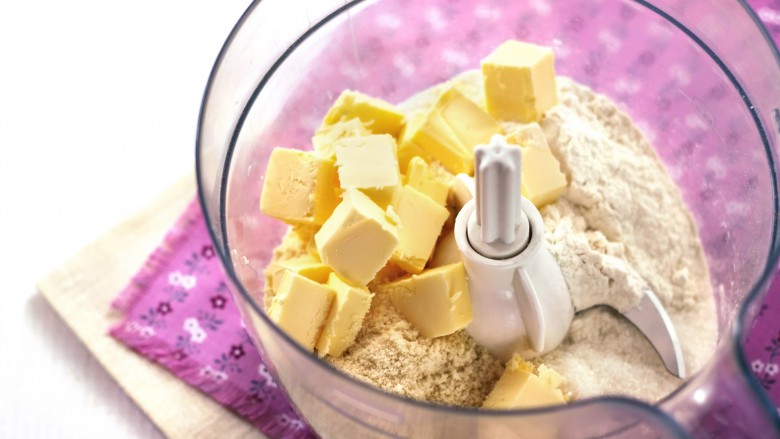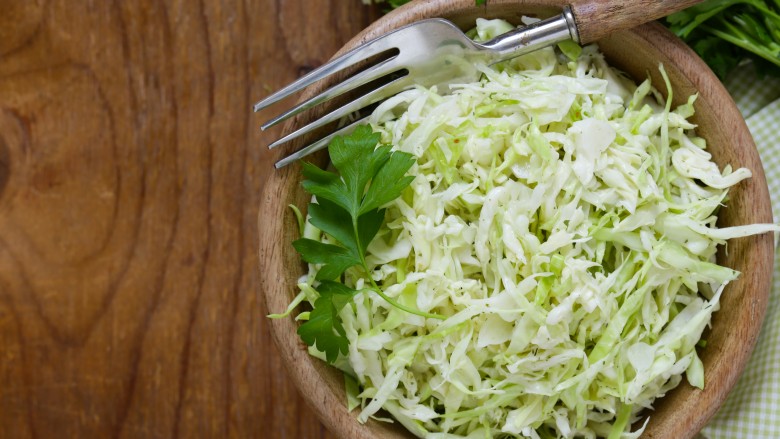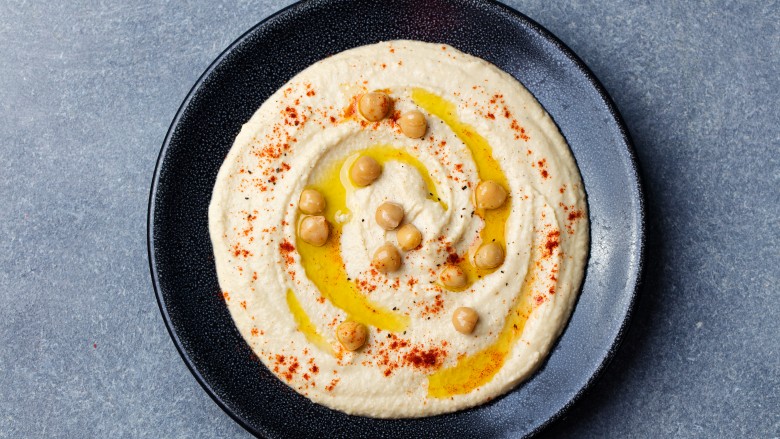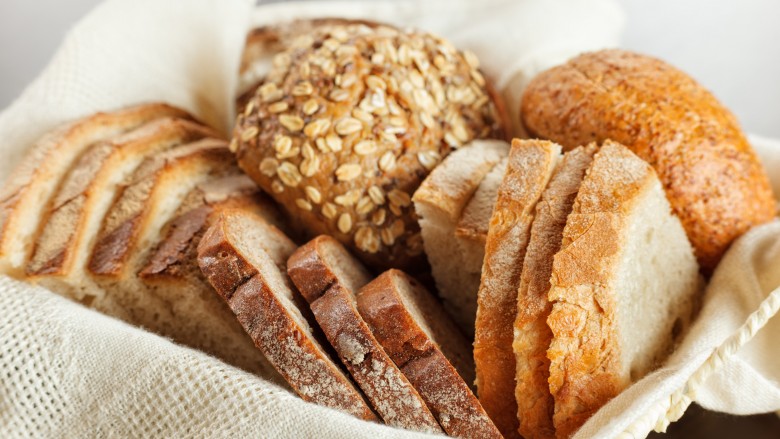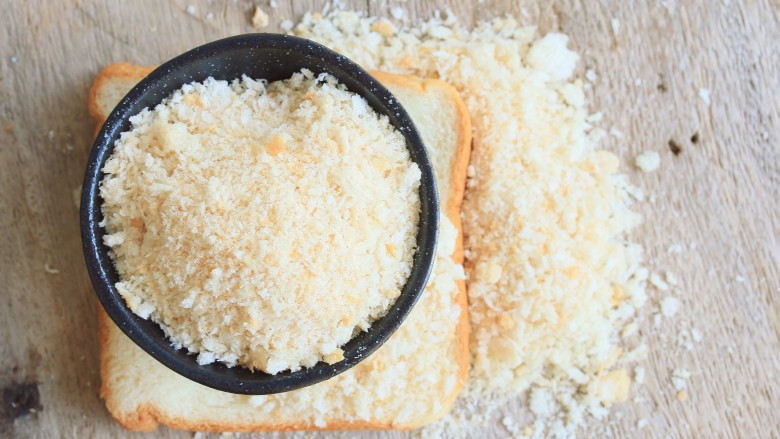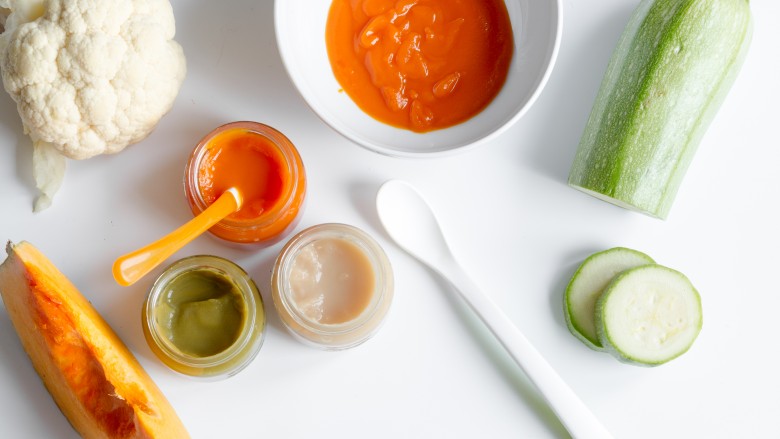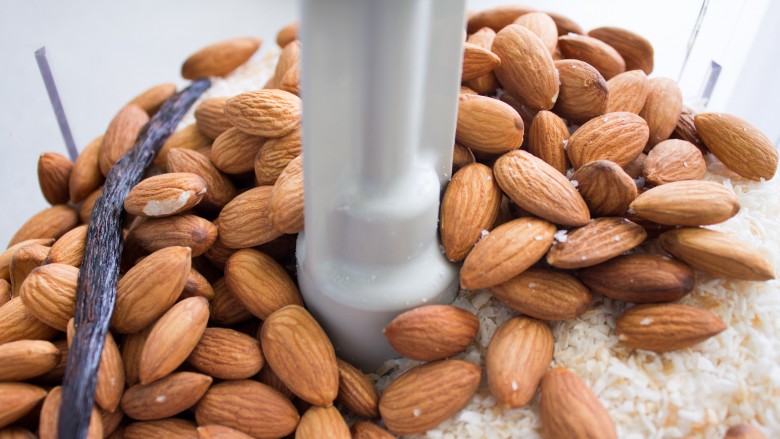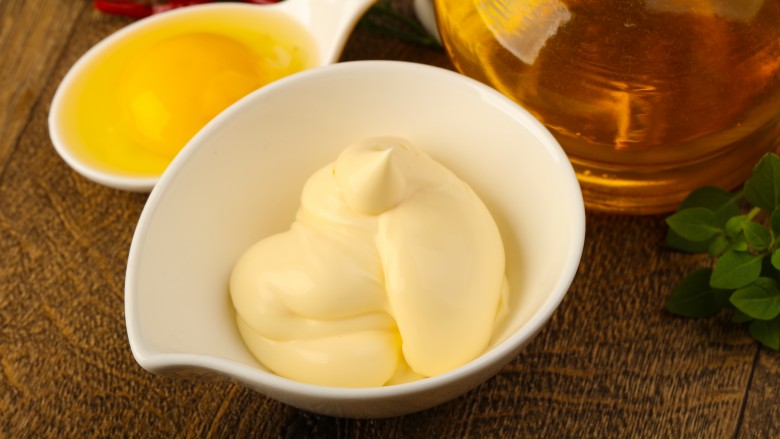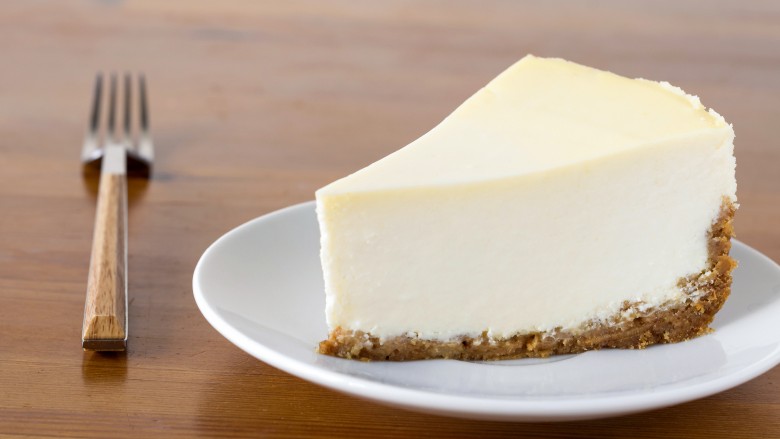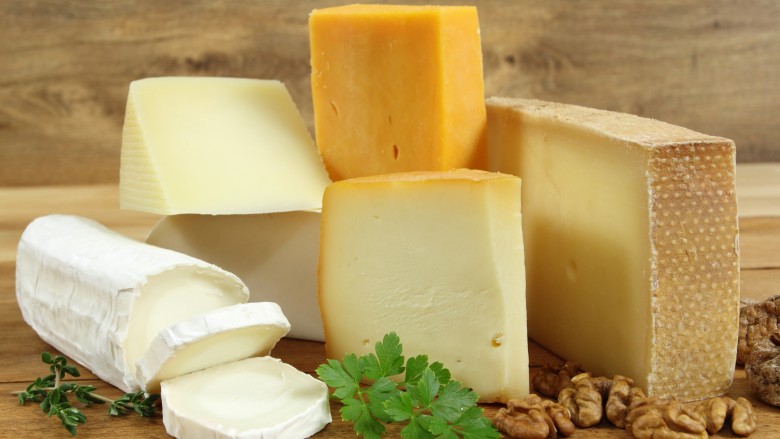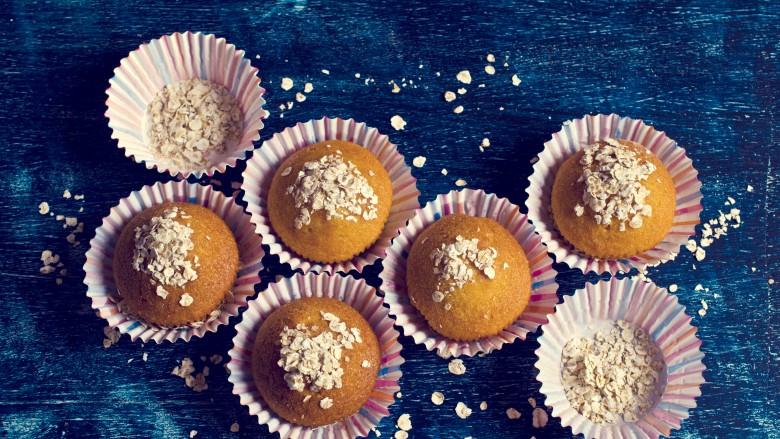Here's The Right Way To Use Your Food Processor
intro
The food processor was invented in France for the professional kitchen to take on many heavy-duty chopping jobs.
The design was eventually and (thankfully) adjusted for home use, and the handy kitchen appliance made its way across the ocean to the U.S. where some of the giants of home cooking, like Craig Claiborne, Julia Child, and James Beard, publicly sang its praises.
The humble food processor is now a standard piece of kitchen equipment, invaluable when time-consuming mincing or pureeing jobs come up in recipes. But it's sometimes forgotten when it comes to other ways it might come in handy to make cooking faster, easier, and better.
Start getting the most out of your kitchen helper! Dust off your food processor and use it in ways you may have never thought of before.
Use your food processor to chop produce quickly
If you let the food processor do the work, you can carry out rapid-fire chopping during your next dinnertime prep with little fear of nicks or cuts. In many cases you'll have to cut the ingredient into chunks, but that's about all the prep required. And when you've got a big job, like chopping a lot of onions, the food processor turns the task into a tearless operation. The onions and blade are enclosed in a food processor and keep the whole process (and irritating gases) self-contained. For onions and other soft fruit like tomatoes or plums, chop using short pulses so the ingredient doesn't turn to a pulp.
A few ingredients need special attention to be chopped in the food processor. Garlic cloves won't mince evenly if you just throw them in and turn it on. Instead you should drop cloves one at a time into the food processor while it's running. Chop ginger (cut into small chunks) this way, too. Chopping nuts can get tricky because the friction of the blade warms the nuts and oils, and the whole batch could turn into butter instead of just small pieces. Pulse the blade so it makes short, quick chops and avoid filling the bowl too full. This will help make the pieces evenly sized after a few pulses. If necessary, divide the task into several batches. You might forget you even own a cutting board.
Your food processor can cut butter into flour
If you aren't doing it already, you're going to love using the food processor to make perfect pie dough, tender scones and biscuits, or shortbread butter cookies.
These types of flaky, tender pastry doughs lend themselves to being prepared in the food processor because the blade can cut the butter with the flour before the butter gets too warm. For success, start with very cold (or even partially frozen) butter cubes and pulse to mix. From there, you can either mix by hand or continue making your pastry with the food processor depending on your recipe instructions.
Your food processor is good at shredding vegetables and fruit
If you've ever made a big batch of coleslaw from scratch, you know freshly shredded cabbage really beats out the precut version, both in budget and taste. You'd probably spend a few dollars each on two packages of shredded cabbage to make enough coleslaw to feed eight people. You'll spend half as much if you get a $2 head of cabbage and shred it yourself using the food processor. And the shredding disc that comes with the machine is the tool for the job.
When it comes to shredding and grating in the food processor plenty of produce is fair game, including carrots, potatoes, zucchini, apples, cauliflower, broccoli, cucumbers, mushrooms, radishes, and jicama.
Choose, firm, pitted produce and cut it to fit through the food tube on the lid. You'll get consistent results and save yourself a lot of time at the cutting board.
Blend dips, sauces, and more with your food processor
Getting smooth creamy hummus is the goal when you're making it yourself. The challenge is blending those hard chickpeas into submission. Even canned, the beans have tough skins and are pretty dense, but the food processor chopping blade and a little heat will do the work and make it quick too. Start with warm, simmered beans as they'll break down more easily. You can blend other bean dips in your food processor, although softer beans may not need the simmering step.
While a lot can be said for tradition and the art of doing things slowly, you don't always have time to pull off mortar-and-pestle pesto or to finely dice ingredients for a good pico de gallo, much less mince everything up for a chimichurri sauce. For pesto, grate the cheese first using the shredding or grating disk. Then switch to the chopping blade to combine and finely chop everything together. Make a classic pesto or try chop up this one made with kale and walnuts.
Mix and knead bread dough with your food processor
Bread is especially easy to mix and quick to knead with the aid of a food processor. You only need to combine the ingredients, turn on the machine and let it run until the formed dough rides along the top of the blades. Then knead the dough by hand for a few seconds and let it rise before baking.
Take a French bread recipe for a spin in your food processor to give the method a try. Avoid mixing up stickier bread doughs, like focaccia and brioche: those dough tends to get tangled up on the blade.
Tear bread into crumbs with your food processor
Opt for homemade bread crumbs over store-bought, especially if you've got a lot of leftover bread or want to play around with the flavoring or texture of your crumbs.
Mix up your own flavored blends like Italian- or Cajun-flavored bread crumbs or just make them plain and lightly toasted with a little butter or olive oil. Rather than run the risk of ruining a yummy chicken Parmigiana with subpar bread crumbs: make your own panko with whole wheat bread.
Use your food processor to puree fruit and vegetables
Many raw vegetables and fruits can become delicious pureed side dishes, sauces, and soups with the help of a food processor. Pureeing breaks ingredients down to a liquid and helps meld flavors.
Want a few rules of thumb? Take care when pureeing hot foods and soups, leave the tube open with a towel draped on top to prevent splashing, and work in batches to prevent spillover through the lid.
Cook hard vegetables like butternut squash, fennel, cauliflower, apples, and pears until they're tender enough to easily mash with a fork; otherwise the puree might retain a gritty texture from the pieces that weren't thoroughly cooked. If you do run into this problem, you can strain the mixture.
For peace of mind, pureeing your child's first foods lets you control what's going into them. Try fennel applesauce for a two-ingredient applesauce with enough complexity to appeal to all ages.
Slice vegetables and more with your food processor
Use the food processor and the slicing attachment to thinly slice any firm vegetable like potatoes for a casserole, beets for crisp chips, or apples for pie.
The slicing attachment usually allows you to adjust thickness, depending on the brand food processor you're using. Don't stop at just vegetables and fruit, though — you can also slice hard, cured sausages like pepperoni and salami. You may want to freeze the meat first to cleanly slice rather than tear as the blade passes.
Grind nut butters with your food processor
It doesn't get much easier than putting freshly roasted peanuts (or almost any other nut) into a food processor, turning it on, and watching the legume become a thick creamy paste destined for a transcendent PBJ.
You might want to customize your nut butter by adding a sweetener like honey or coconut oil to adjust the consistency. Be warned, though. Once you get going and realize how fast and how easy it is to whip up top-shelf nut butter whenever you want it, your jelly might have to up its game, too.
You can make your own mayonnaise with your food processor
Making mayo by hand requires a strong arm for whisking egg yolks and seasonings and a steady hand for drizzling oil into the mixture while you're whisking. But you don't have a third arm to hold the bowl still while you whisk to emulsify the ingredients.
The food processor, however, will let you make mayonnaise with one hand tied behind your back. Here's how: put the egg yolk, lemon juice, mustard and seasoning to the food processor and turn it on to mix, then add the oil through the chute in thin, steady stream until the mayonnaise comes together. Mayo like magic!
Use your food processor to blend the creamiest cheesecake
The hallmark of any great cheesecake is its smooth and creamy consistency. To get there, you need ideal mixing conditions, and it would be smart to include the food processor in the equation.
When the blade spins to mix the cream cheese, sour cream, eggs, sugar, and vanilla, it doesn't whip up a lot of air (something that will inevitably happen no matter how slowly you beat the batter using a mixer).
Amy Thielen uses the food processor to turn her cheesecake batter into little crust-free cupcakes with a dollop of jelly. But a classic cheesecake turns out really well, too.
Whichever cheesecake you make, start with room temperature ingredients to help everything blend together. Other than that, the food processor can take over.
Grate and slice many cheese varieties with your food processor
Whether you can grate or slice cheese using the food processor's attachments depends on the type of cheese.
Most soft and semi-soft cheeses just won't work in the food processor unless you're blending them with another ingredient. Mozzarella is the exception — it can be grated or sliced, but you'll need to chill the block of cheese first so it shreds easily.
Semi-hard cheeses like cheddar, Swiss, provolone, Monterey jack, and gouda should also be chilled before slicing or shredding.
Hard cheeses like Parmesan and Pecorino will easily grate or shred at room temperature, but are too crumbly to slice using a food processor.
Other hacks for the food processor
Try some of these tricks and tips for using your food processor.
- Grind oats into flour. Hard grains like spelt and wheat berries won't process to a powder, but you can grind rolled oats to a flour and use it for baking and other cooking jobs.
- By the same grain, you can also process granulated sugar down for homemade powdered sugar. To prevent your powdered sugar from clumping, add a little cornstarch to dry out moisture.
- Churn a batch of ice cream or frozen yogurt. The trick is to freeze the ingredients and then blend them together in the food processor using the chopping blade to do the mixing.
- Make this DIY Nutella. The food processor is the perfect tool to blend the chunky nuts down to a paste and incorporating luscious chocolate.

